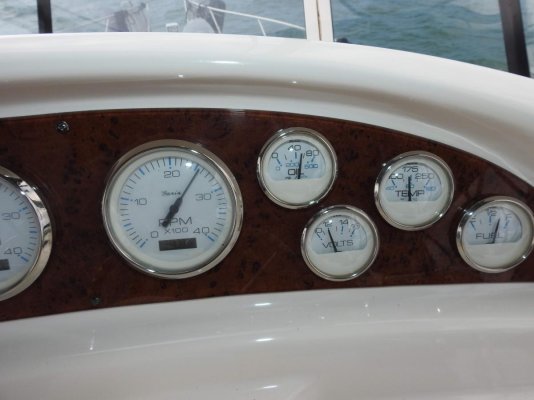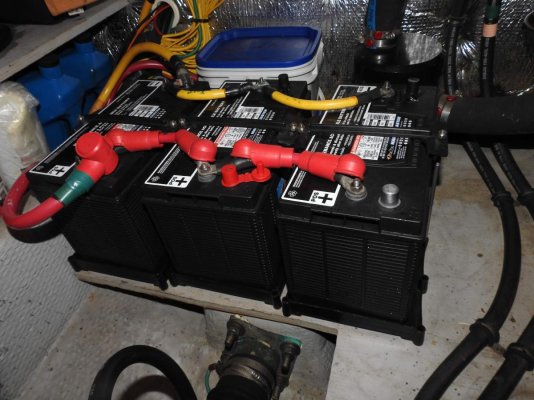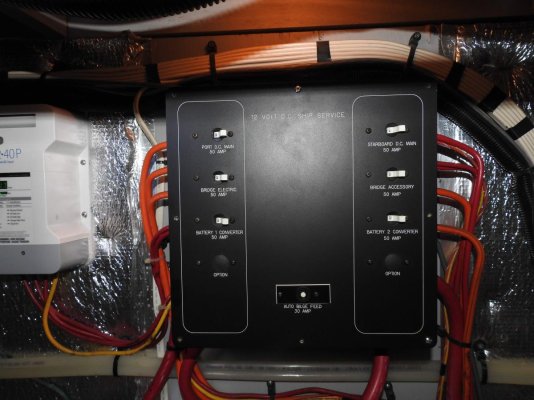BDofMSP
Guru
- Joined
- Sep 5, 2013
- Messages
- 905
- Location
- USA
- Vessel Name
- Gopher Broke
- Vessel Make
- Silverton 410 Sport Bridge
What exactly does my dash panel voltage gauge measure? I ask because on the starboard side the gauge generally starts out showing 12 volts (or just slightly less) and then over the hours declines down to around 11, although it will bounce around occasionally in there.
I've measured at the terminals with a multimeter and the gauge is showing what the meter is receiving. I've also measured (engine and charger off) at the batteries both before (when it shows 12) and after (when it shows 11 or less) and each time the batteries themselves show about 12.8.
The gauges at the 12 volt panel in the salon also match these readings. They never show below 12.6 - 12.8 even when the dash shows less than 11.
If I start the gen while underway and turn on the battery charger, the gauge pops up to over 12.6. If I turn it off, it drops immediately below, and resumes fading further. This leads me to believe that it's showing me the output of the charging system, except the gauge shows voltage even before the engine is started, when the charging system isn't running.
I've cleaned connections at the gauge with no change. I'm not sure where that wire is pulling it's readings from at the other end or I'd clean that end too.
I'm sure this is obvious to experienced folks, but it's a head scratcher for me right now.
Thanks
BD
I've measured at the terminals with a multimeter and the gauge is showing what the meter is receiving. I've also measured (engine and charger off) at the batteries both before (when it shows 12) and after (when it shows 11 or less) and each time the batteries themselves show about 12.8.
The gauges at the 12 volt panel in the salon also match these readings. They never show below 12.6 - 12.8 even when the dash shows less than 11.
If I start the gen while underway and turn on the battery charger, the gauge pops up to over 12.6. If I turn it off, it drops immediately below, and resumes fading further. This leads me to believe that it's showing me the output of the charging system, except the gauge shows voltage even before the engine is started, when the charging system isn't running.
I've cleaned connections at the gauge with no change. I'm not sure where that wire is pulling it's readings from at the other end or I'd clean that end too.
I'm sure this is obvious to experienced folks, but it's a head scratcher for me right now.
Thanks
BD




